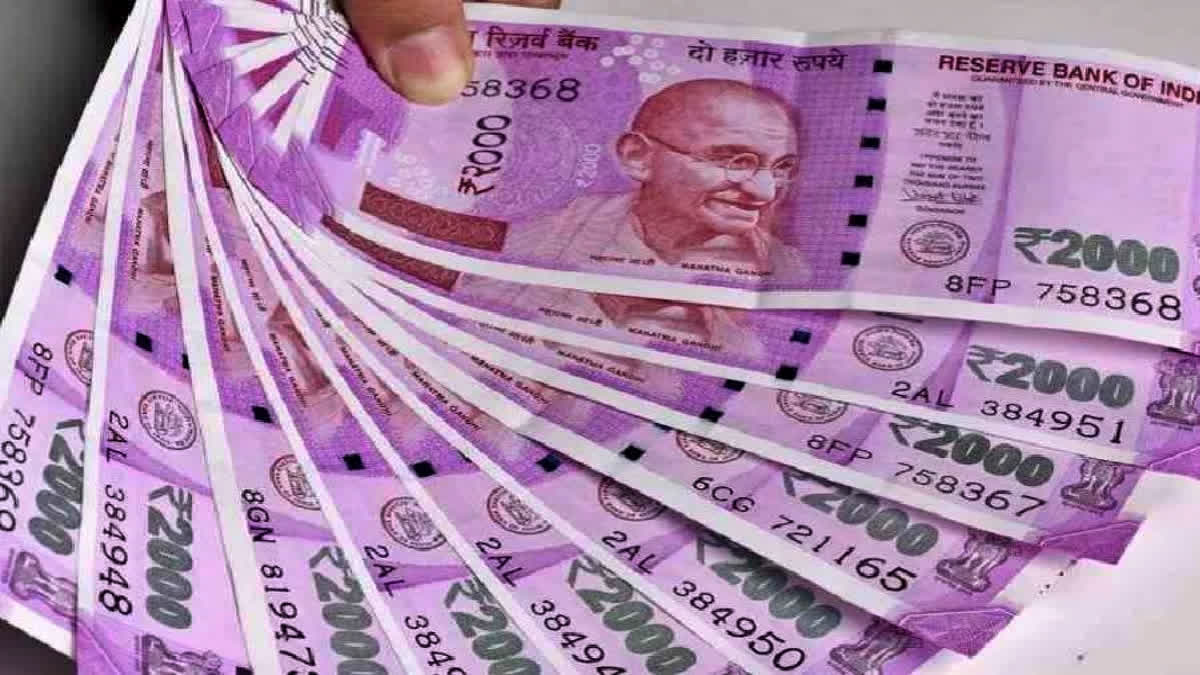New Delhi: The Delhi High Court on Monday dismissed a petition challenging the notifications enabling the exchange of Rs 2,000 denomination currency notes without any requisition slip and ID proof, saying it has been done to avoid inconvenience to citizens, and the court cannot sit as an appellate authority on a policy decision.
The court's remarks came after the Reserve Bank of India (RBI) on May 19 announced withdrawal of Rs 2,000 currency notes from circulation, and said existing notes in circulation can either be deposited in bank accounts or exchanged by September 30. The banknotes in Rs 2,000 denomination will, however, continue to be legal tender, the RBI said in a statement.
The RBI's decision to end the circulation of Rs 2,000 bank notes from October this year will impact the country’s economy in more than one way and its impact on society and polity will be felt for quite some time. The first impact would be when people deposit the bank notes there will be temporary increase in the liquidity in the banking system as more and more people will either convert their Rs 2,000 currency notes into bank notes of smaller denominations or they will deposit these notes as they will be phased out over the next four months.
As a natural corollary, liquidity will continue to increase till September this year and will support deposit growth in the banks. These Rs 2,000 bank notes that were printed in the wake of the November 2016 demonetization to quickly replenish cash in the system have been nearing the end of their shelf-life and in any case were meant to be phased out.
“Compared to demonetisation, this time the quantum of currency being withdrawn is significantly smaller and the period to complete the process is more spread-out,” said Gaura Sen Gupta, India Economist of IDFC First Bank. According to Sen Gupta, the liquidity infusion implies that any need for durable liquidity infusion by the RBI is effectively pushed out towards the end of FY24. RBI Governor Shakti Kanta Das also admitted that the 2023 note bank will marginally impact the economy.
85% currency was withdrawn in 2016
Unlike 2023 note ban, which only puts over 10 percent cash out of circulation, 85 percent of the cash was put out of circulation during the 2016 demonetization announced by Prime Minister Modi and severely dented the country’s economy and unorganized sector was particularly hit hard with large scale job losses.
Secondly, this time the impact on the economy will be marginal due to the fact that unlike the first note ban announced by the Modi government, Rs 2,000 bank notes continue to be the legal tender till September 30 and on Monday RBI governor asserted that the shop keepers cannot refuse to accept these notes till the end of the deadline.
In the 2016 note ban, Rs 500 and Rs 1,000 bank notes ceased to be legal tender overnight. According to some estimates, after the 2016 note ban, the cash in circulation declined by Rs 9 lakh crore (Rs 9 trillion) while the total value of notes withdrawn was Rs 15.4 lakh crore (Rs 15.4 trillion).
“It means that around 42 percent of the notes withdrawn were exchanged. Meanwhile, bank deposits rose by Rs 6 lakh crore (Rs 6 trillion). As per RBI’s analysis (Mint Street Memo Demonetisation and Bank Deposit Growth August 2017), excess deposits created was between Rs 2.8 lakh crore to Rs 4.3 lakh crore,” Guara Sen Gupta said in a statement sent to ETV Bharat.
Rs 1.8 lakh crore currency leakage will be plugged
Sen Gupta says if one assumes that just half the total value of Rs 3.6 lakh crore is converted into other denominations then it means that the currency leakage to the tune of Rs 1.8 lakh crore will be reduced till the September 30 deadline.
Moreover, according to the economist, experience from 2016 note ban shows that it took 14 months for currency in circulation to rise to pre-November 2016 levels. However, this time around the process is likely to be much quicker given the lesser quantum involved.
“If we assume that it takes around 8 months for currency in circulation to rise by Rs 1.8 lakh crore, starting from the second half of the current financial year. This implies that full year currency leakage is likely to be lower by Rs 500 billion,” she said.
Bank deposits to rise by Rs 1.4 lakh crore
Estimates suggest that due to the 2016 note ban, around 30 percent to 40 percent of the value of notes withdrawn went into bank deposits. Using this as a guide, around Rs 1.4 lakh crore could flow into bank deposits, which represents 0.8 percent of total bank deposits. It means the deposit boost will be temporary but it will support banks investment in t-bills.



